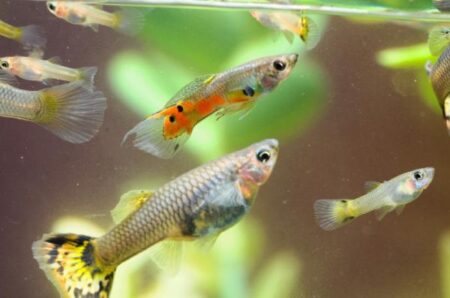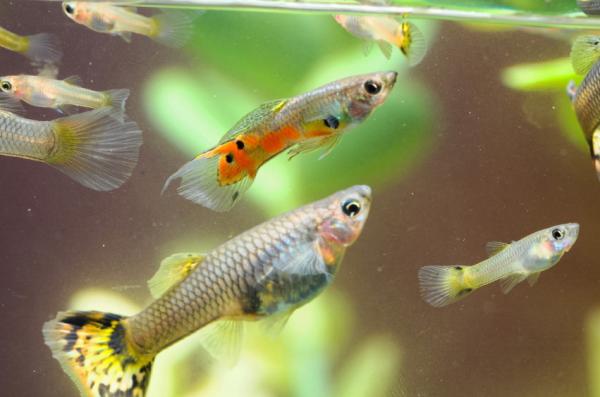 We explain how fish reproduce oviparously, viviparously and ovoviviparously. Also, what are reproductive migrations.
We explain how fish reproduce oviparously, viviparously and ovoviviparously. Also, what are reproductive migrations.
How do fish reproduce?
Fish are the largest and most diverse group of vertebrate animals . About 28,000 species are known , but it is estimated that there may be about 34,000. These aquatic animals live in both marine and freshwater environments : oceans , seas, lakes, lagoons, swamps, streams, and rivers, among others.
Fish are characterized by breathing through gills and by having fin-like limbs . However, there are exceptions, such as lungfish or those with leg-like limbs (for example, Thymichthys politus ).
In this highly diverse group, cartilaginous fish (which include rays and sharks) are distinguished from bony fish. However, this category does not include other aquatic animals , such as whales, dolphins and sea lions (which are mammals), or such as octopuses, squids, lobsters and jellyfish (which are invertebrates).
The enormous diversity of fish causes different forms of reproduction to appear . However, the vast majority of species reproduce sexually and have separate sexes . This makes courtship strategies to attract a mate common, such as dances and nest-making.
Almost all fish are oviparous (the embryos develop in an egg, external to the mother’s body) and ovuliparous (fertilization is also external). There is also a considerable number of viviparous and ovoviviparous species.
Species have developed different strategies throughout evolution to guarantee their perpetuity. In general, species that do not care for their eggs lay large numbers , while those that provide more parental care have fewer young per litter.
See also: Animals of the sea
Types of fish reproduction
Betta fish have a complex mating ritual.
Fish reproduction can be classified as oviparous, viviparous or ovoviviparous depending on how the embryos develop.
Fish with oviparous reproduction
Most fish present oviparous reproduction , which is one in which each embryo develops inside an egg outside the maternal body. Particularly, fish (like some amphibians) are considered ovuliparous because they have external fertilization.
Generally, the female deposits her eggs in the environment and the male fertilizes them with his sperm . These eggs have the characteristic of being soft, something that is only possible in aquatic environments. Some are released directly into the water, while others settle on the bottom (sandy or silty), on algae or submerged plants, or in bubble nests.
There are only a few cases in which the eggs are fertilized inside the female. However, these are expelled into the environment long before they hatch.
Fish with viviparous reproduction
Some fish have viviparous reproduction similar to that of mammals, such as the lemon shark ( Negaprion brevirostris ) and the skipjack ( Jenynsia lineata ). This type of reproduction implies the internal fertilization of the female and the development of the embryo inside her.
Depending on the species, embryos can be nourished from ovarian tissues or through a placenta. Compared to oviparous fish, these fish usually have fewer offspring per litter , but they are born more developed and larger. This ensures greater survival.
Fish with ovoviviparous reproduction
Ovoviviparous reproduction occurs in many sharks and rays, as well as seahorses, guppies, and mollies, among other fish. This method of reproduction somehow combines oviparity and viviparity.
The female produces eggs that are internally fertilized by the male during copulation . These eggs remain inside the maternal body and provide all the nutrients to the embryos. When they are ready to hatch, the female expels them into the water moments before or after birth.
hermaphroditism of fish
The flame angelfish is one of the few hermaphroditic species.
90% of fish are dioecious, that is, they have separate sexes. Some species, such as betta fish, are sexually dimorphic . This means that males and females differ morphologically in their size or color. In other species, such as tunas, both sexes are similar.
However, there are also hermaphroditic species , whose individuals produce both sperm and eggs . Some fish have simultaneous hermaphroditism, because they generate both gametes at the same time. However, they do not self-fertilize but mate with another individual of the same species.
Most commonly, hermaphroditism is sequential , that is, individuals change sex at some point in their life cycle. Proterogyneous species, such as grouper ( Epinephelus marginatus ) and damsel ( Coris julis ), are born as females and later mature as males. The opposite is true for protandric species, such as sea bream ( Sparus aurata ) and salp ( Sarpa salpa ).
reproductive migrations of fish
During their breeding migration, salmon can overcome obstacles of up to five meters.
Migratory species are those that make long journeys or displacements. Breeding migration is one that has the purpose of reproducing and spawning (laying their eggs). This allows them a greater survival of their young.
Some species make short journeys between lakes and rivers, or between different parts of the ocean. Others travel between fresh and salt water, which they do not do at another stage of their life cycle.
Marine species that carry out reproductive migrations towards freshwater bodies are called anadromous. The classic example is salmon, a sea fish that, when it reaches sexual maturity, goes upstream upstream until it reaches its spawning grounds.
During this displacement, salmon can be seen jumping over the unevenness of the rivers, an opportunity that many land predators take advantage of.
In contrast, freshwater species that migrate to the sea are called catadromous. For example, eels start their journey downstream when they are ready to spawn. They can even walk stretches out of the water thanks to the abundant mucus on their skin.
